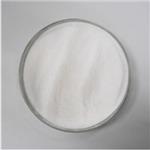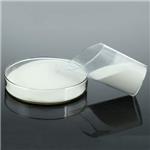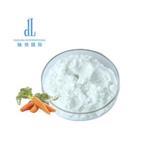- Iprodione
-

- $29410.00 / 1Tons
-
2024-04-26
- CAS:36734-19-7
- Min. Order: 1Tons
- Purity: 99.99%
- Supply Ability: 500Tons
- Iprodione
-

- $10.00 / 1kg
-
2023-07-19
- CAS:36734-19-7
- Min. Order: 1kg
- Purity: 99%
- Supply Ability: 1000tons
- Iprodione
-

- $20.00 / 1kg
-
2022-08-19
- CAS:36734-19-7
- Min. Order: 1kg
- Purity: 99%
- Supply Ability: 5000 Ton
|
| | Iprodione Basic information |
| | Iprodione Chemical Properties |
| Melting point | 130-134 °C(lit.) | | density | 1.6223 (rough estimate) | | vapor pressure | 5 x 10-7 Pa (25 °C) | | refractive index | 1.6140 (estimate) | | Fp | 2 °C | | storage temp. | Sealed in dry,Room Temperature | | solubility | DMSO: 100 mg/mL (302.87 mM) | | pka | 9.19±0.20(Predicted) | | Water Solubility | 0.0013 g/100 mL | | Merck | 13,5096 | | BRN | 895003 | | LogP | 3.000 | | CAS DataBase Reference | 36734-19-7(CAS DataBase Reference) | | NIST Chemistry Reference | Iprodione(36734-19-7) | | EPA Substance Registry System | Iprodione (36734-19-7) |
| | Iprodione Usage And Synthesis |
| Uses | Fungicide. | | Uses | Iprodione is a non-systemic fungicide that exhibits both protectant
and eradicant activities against the spores and mycelium of a number
of parasitic fungi. It is effective against Alternaria, Botrytis, Corticium,
Fusarium, Helminthosporium, Monilinia, Phoma, Pleiochaeta, Rhizoctonia
and Sclerotinia, etc. in nut crops, fruit trees (stone and pome fruit),
vines, berries, vegetables, cereals, oilseed rape, cotton and ornamentals.
Iprodione also controls various summer and winter turf diseases. | | Definition | ChEBI: An imidazolidine-2,4-dione in which the nitrogen at position 1 is substituted by an N-(isopropyl)carboxamide group while that at position 3 is substituted by a 3,5-dichlorophenyl group. A contact fungicide, it blocks the growth of the fu
gal mycelium and inhibits the germination of fungal spores. It is used on fruit and vegetable crops affected by various fungal diseases. It is also used as a nematicide. | | Production Methods | The synthesis uses 3,5-dichloroaniline which is coupled with glycine and phosgene. The urea substructure is formed by reaction with isopropylamine and phosgene. Many fungicide mixtures with Iprodione are on the market.
| | Safety Profile | Moderately toxic by
ingestion. When heated to decomposition it
emits very toxic fumes of NOx and Cl-. | | Environmental Fate | Soil. Readily degrades in soil (half-life 20 to 160 days) releasing carbon dioxide 3,5dichloroaniline (Walker, 1987) and (Hartley and Kidd, 1987; Worthing and Hance, 1991). The rate of degradation increases with repeated applications of this fungicide. In a clay loam, the half-life was 1 week. After the second and third applications, the half-lives were 5 and 2 days, respectively (Walker et al., 1986).
Plant. Translocation and uptake by potato plants were reported (Cayley and Hide, 1980). Iprodione is rapidly metabolized in plants to 3,5-dichloroaniline (Cayley and Hide, 1980; Hartley and Kidd, 1987).
Chemical/Physical. In an aqueous solution at pH 8.7, iprodione hydrolyzed to N-(3,5dichloroanilinocarbonyl)-N-(isopropylaminocarbonyl)glycine (Belafdal et al., 1986). At pH 8.7, complete hydrolysis occurred after 14 hours (Cayley and Hide, 1980).
Gomez et al. (1982) studied the pyrolysis of iprodione in an helium atmosphere at 400–1,000°C. Decomposition began at 300°C producing isopropyl isocyanate and 3-(3,5dichlorophenyl)hydantoin. Above 600°C, the hydantoin ring began to decompose forming the following products: 3-chloroaniline, 3,5-dichloroaniline, chlorinated benzenes and benzonitrile. From 800 to 1,000°C, the hydantoin ring was completed destroyed whichled to the formation of aryl isocyanates, anilines and the corresponding diarylureas, namely 3-(3,5-dichlorophenyl)urea and 1-(3-chlorophenyl)-3-(3,5-dichlorophenyl)urea (Gomez et al., 1982). | | Metabolic pathway | The opening and rearrangement of the dioxoimidazolidine ring is the
initial and major degradation/metabolic reaction for iprodione. Iprodione
degrades in soil via cleavage of the dioxoimidazolidine-carboxamide
linkage, followed by ring opening to yield 3,5-dichloroaniline and
CO2. In plants and animals, primary degradation reactions include
N-dealkylation of the isopropyl moiety, ring opening and aryl hydroxylation
(Scheme 1). | | Degradation | Iprodione (1) is stable in acidic solution (< pH 5) and degraded rapidly
in alkaline solution with DT50 values of 37 days, 1.1 days and 21 min at
pH 5, 7 and 9 at 25 °C, respectively (Melkebeke et al., 1986). Opening
of the oxazolidinedione ring yielded N-(3,5-dichloroanilinocarbonyl)-N-
(isopropylaminocarbonyl)glycine (2) (Belafdal et al., 1986). This reaction
involves the attack of a hydroxyl ion on the carbonyl moiety in the
4-position of the hydantoin ring. Laurent (1974a, 1976a) and Das (1990)
reported the further dehydration/rearrangement of compound 2 to yield
an iprodione isomer (3).
Iprodione degraded readily in water under UV light irradiation
(Laurent, 197413) but was relatively stable when exposed to simulated
sunlight (Adrian and Robles, 1991). The degradation of iprodione in aqueous
solution proceeded via various mechanisms including isomerisation,
dechlorination, hydrolysis and hydroxylation.
Schwack et al. (1995) and Schwack and Bourgeois (1989) reported that
dechlorination was the primary photodegradation reaction when iprodione
in various organic solvents (e.g. isopropanol) was irradiated with
UV light (>280 nm). Other photodegradation reactions included the
replacement of the chlorine atom by the solvent molecule. |
| | Iprodione Preparation Products And Raw materials |
|